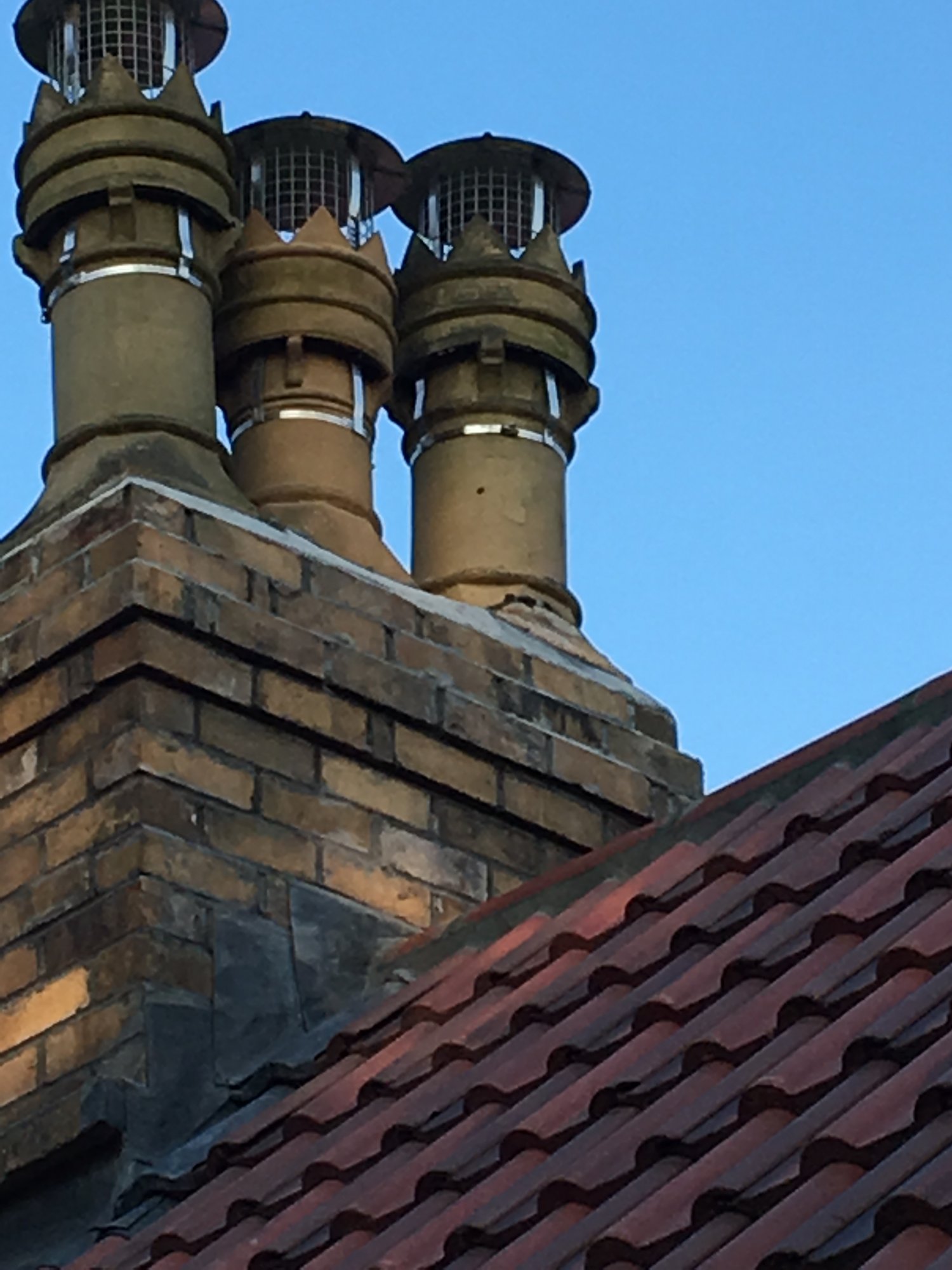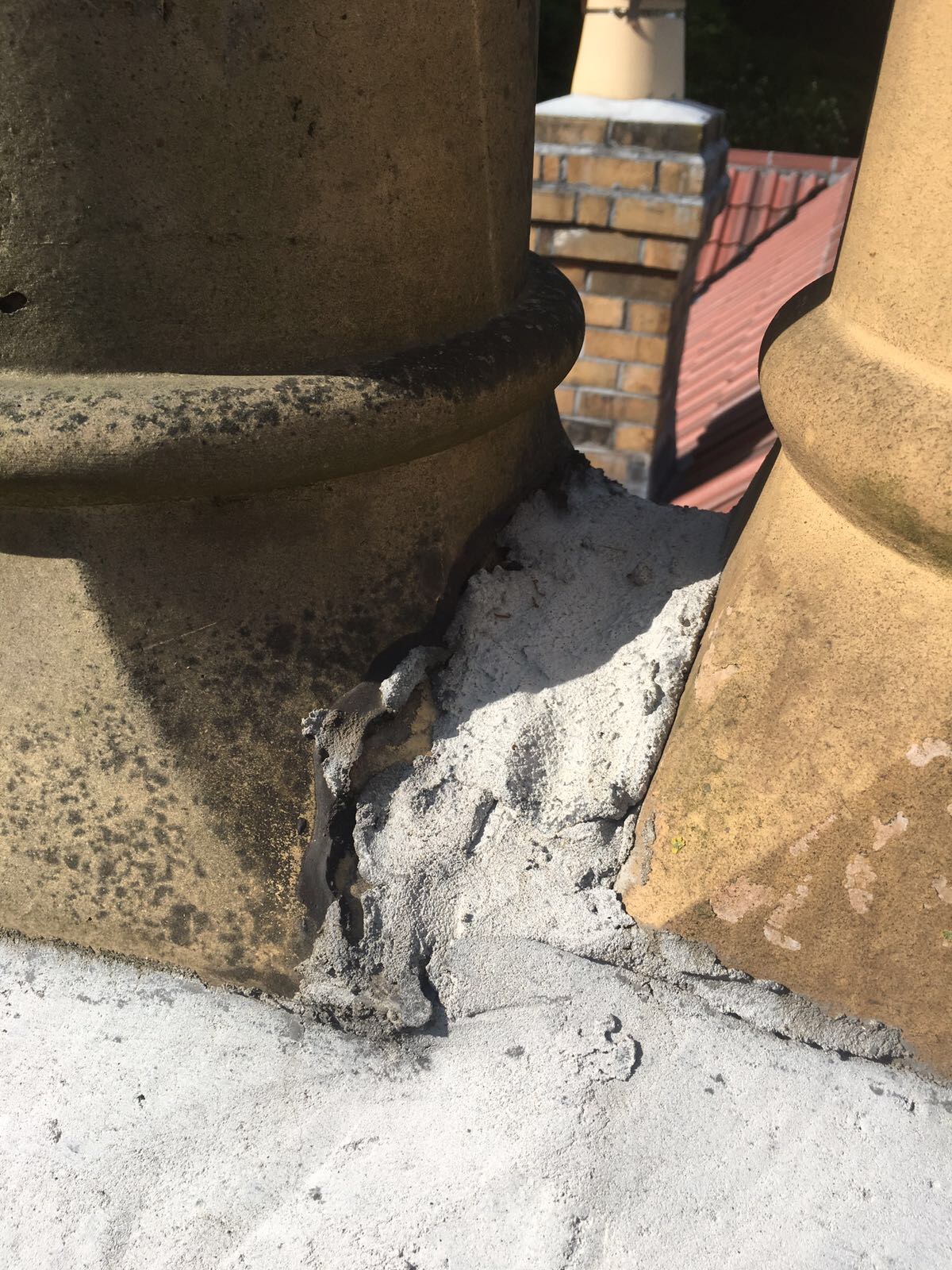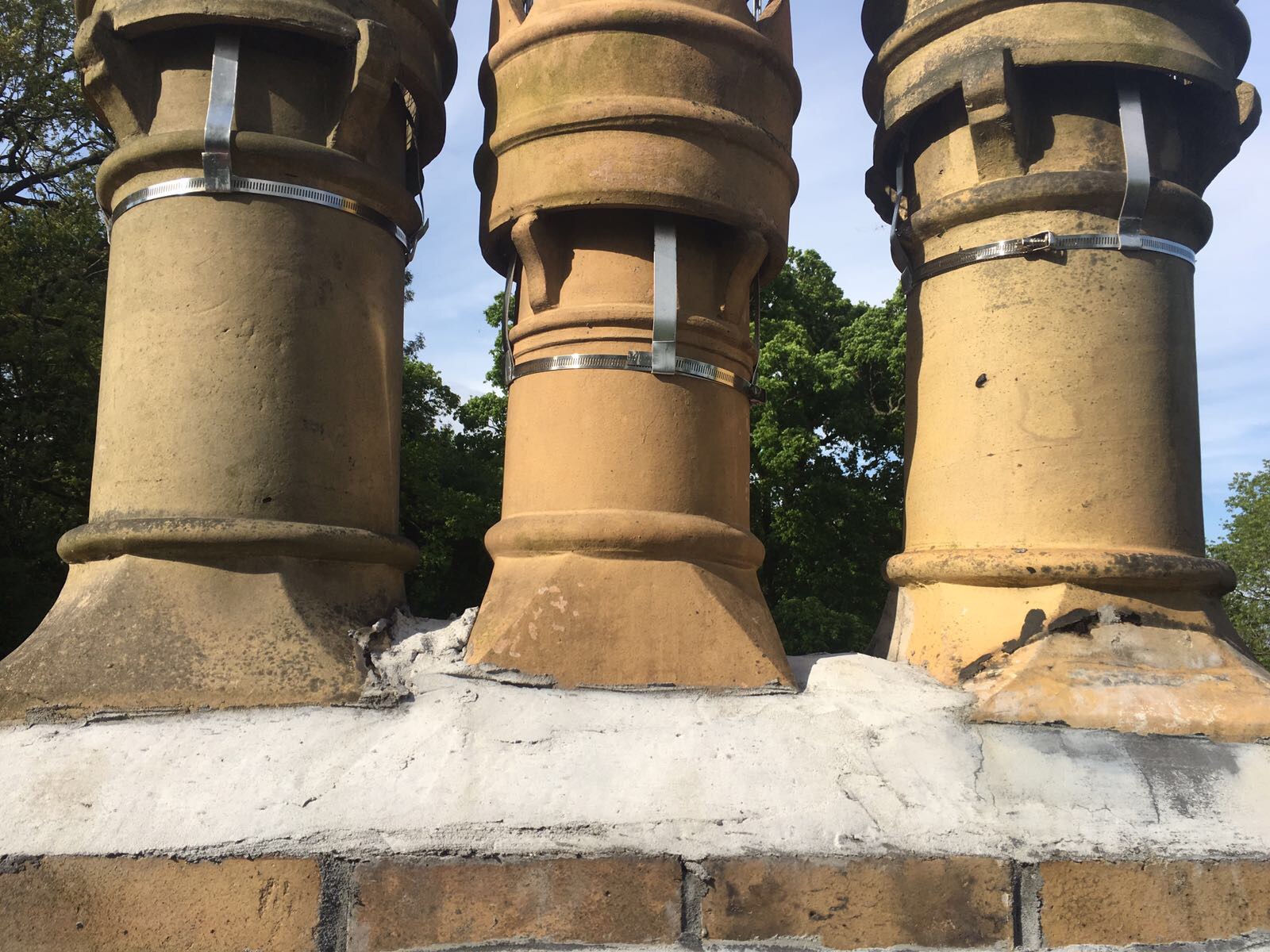Hi,
I live in an old house, mid 19th Century. Last summer, as part of roofing work, I had the two chimneys rebuilt (one was leaning, and in the other the pointing had failed so badly that a rebuild was advised). One chimney is in use with a wood-burning stove, and we had it lined. The other chimney, which has 3 flues, is not in use at all.
The builder said he would use a 4:1 sand/cement mix. I suggested a 3:1 mix to deal with weathering, and he agreed.
I have recently been told that given the age of the building he should have used a lime based mortar mix, with no cement. Is that right?
I can see that this matters with repointing; is the issue better or worse given it was a rebuild?
I've also been told his work on the flaunching on the 3-flue chimney leaves a lot to be desired. Here's some photos.
I am not sure whether any of this is a cause for concern (and I'm more concerned about the mortar mix than the flaunching) and if so, what I should do to remedy the problems.
I'd be grateful for some advice. Many thanks.
I live in an old house, mid 19th Century. Last summer, as part of roofing work, I had the two chimneys rebuilt (one was leaning, and in the other the pointing had failed so badly that a rebuild was advised). One chimney is in use with a wood-burning stove, and we had it lined. The other chimney, which has 3 flues, is not in use at all.
The builder said he would use a 4:1 sand/cement mix. I suggested a 3:1 mix to deal with weathering, and he agreed.
I have recently been told that given the age of the building he should have used a lime based mortar mix, with no cement. Is that right?
I can see that this matters with repointing; is the issue better or worse given it was a rebuild?
I've also been told his work on the flaunching on the 3-flue chimney leaves a lot to be desired. Here's some photos.
I am not sure whether any of this is a cause for concern (and I'm more concerned about the mortar mix than the flaunching) and if so, what I should do to remedy the problems.
I'd be grateful for some advice. Many thanks.




